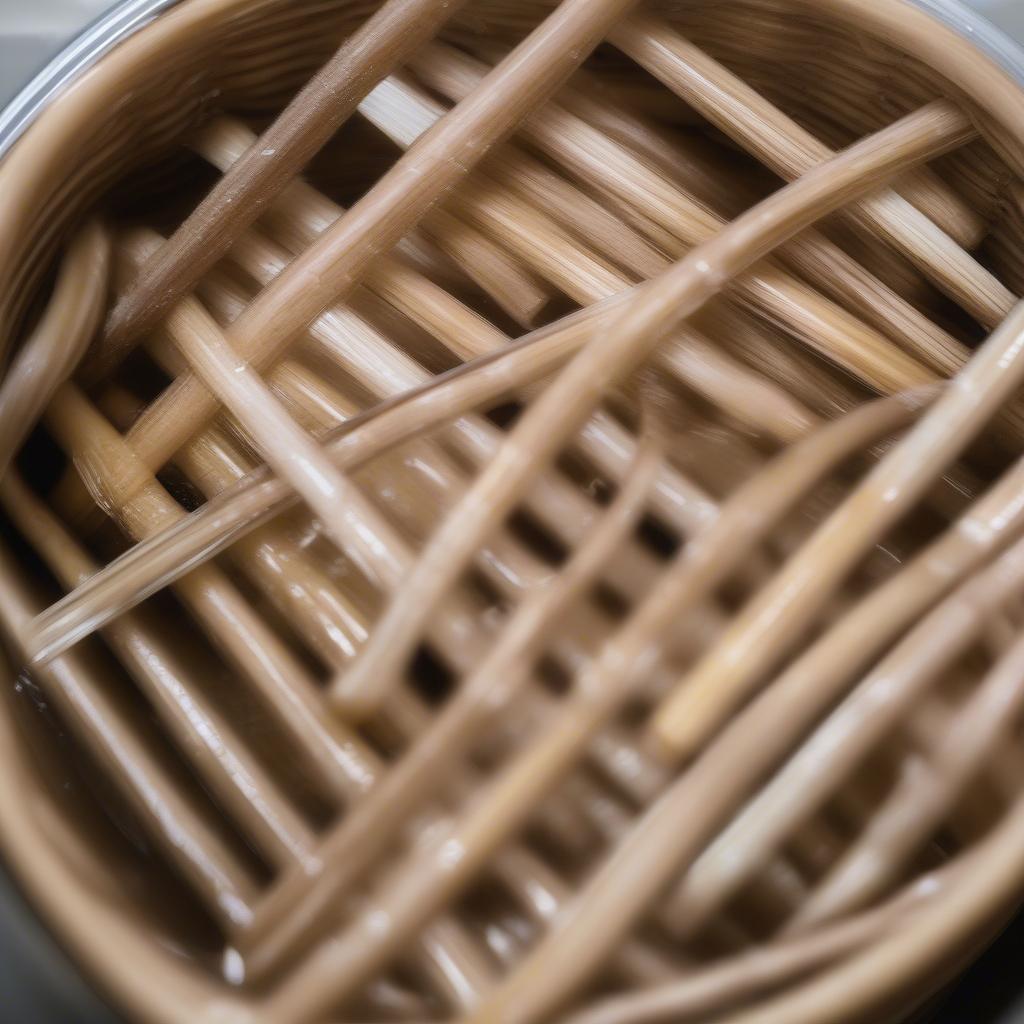Weave Chair
Weaving a Chair Seat with Binder Cane
Weaving a chair seat with binder cane is a rewarding project that blends traditional craftsmanship with practical functionality. Whether you’re restoring a cherished heirloom or adding a touch of rustic charm to a new piece, understanding the techniques and materials involved will ensure a beautiful and durable result. This guide provides a comprehensive walkthrough of the process, offering tips and tricks to help you achieve a professional finish.
Preparing for Your Cane Weaving Project
Before diving into the weave, proper preparation is key. This includes gathering your materials and understanding the type of cane you’ll be working with. Binder cane, specifically, is a thicker, wider cane used to create the structural frame for your seat, providing a foundation for the finer weaving cane.
- Materials: Binder cane, weaving cane (if applicable), awl, hammer, nails, scissors, measuring tape, water bucket.
- Soaking the Cane: Soaking binder cane in warm water for at least 30 minutes makes it pliable and easier to manipulate, reducing the risk of breakage. The ideal soaking time depends on the cane’s thickness and dryness.
 Soaking Binder Cane in Water
Soaking Binder Cane in Water
Creating the Framework with Binder Cane
The framework is the skeleton of your woven seat. Accuracy at this stage is vital for a balanced and even final product.
- Measuring and Cutting: Measure the chair seat opening accurately. Cut the binder cane to the appropriate lengths, adding a few inches extra for weaving and securing.
- Creating the Rails: Start by weaving the binder cane across the seat opening, creating the horizontal and vertical rails. Secure the ends with nails, ensuring they are flush with the frame.
- Spacing the Rails: Maintain even spacing between the rails. This will dictate the density and overall appearance of the finished seat. Use a ruler or template to ensure consistency.
 Creating the Binder Cane Framework for a Chair Seat
Creating the Binder Cane Framework for a Chair Seat
Weaving Techniques with Binder Cane
While binder cane primarily forms the framework, it can also be used in decorative weaving techniques.
- Diagonal Weaving: This technique involves weaving the binder cane diagonally across the rails, creating a visually appealing pattern.
- Bordering: Use binder cane to create a strong and attractive border around the seat’s perimeter. This adds a finished look and enhances durability.
Troubleshooting Common Binder Cane Weaving Issues
Like any craft, weaving with binder cane can present some challenges.
- Cane Splitting: Soaking the cane thoroughly helps prevent splitting. If splitting occurs, try sanding the rough edges.
- Uneven Tension: Consistent tension is crucial for a neat and even weave. Practice and patience will improve your ability to maintain proper tension.
- Securing the Ends: Ensure the ends of the binder cane are securely fastened to prevent unraveling. Using small nails and tucking the ends under other woven strands is a common method.
Choosing the Right Binder Cane
Not all binder cane is created equal. Consider these factors when selecting your materials:
- Width and Thickness: Choose the appropriate width and thickness for your project. Thicker cane is ideal for larger seats and heavier use.
- Quality: High-quality binder cane will be more pliable and less prone to splitting.
 Various Types of Binder Cane
Various Types of Binder Cane
Conclusion
Weaving a chair seat with binder cane offers a fulfilling and creative way to revitalize furniture or craft unique pieces. By understanding the techniques and following the steps outlined in this guide, you can successfully weave a beautiful and long-lasting chair seat. Now it’s your turn to try! Weaving a chair seat with binder cane can seem daunting, but with practice, patience, and the right techniques, you can create a beautiful and functional piece.
FAQ
- How long does binder cane need to soak? At least 30 minutes, but longer for thicker cane.
- What type of nails should I use? Small finishing nails work best.
- Can I paint or stain binder cane? Yes, after it’s dry.
- Where can I buy binder cane? Craft stores, online retailers, and chair caning supply shops.
- What if my cane breaks while weaving? Simply start a new strand and weave it in.
Common Scenarios
- Loose Cane: Check the tension and re-weave if necessary.
- Broken Rail: Replace the broken rail and re-weave the affected area.
- Uneven Weaving: Practice maintaining consistent tension throughout the weaving process.
Further Exploration
Check out our other articles on chair caning and weaving with natural materials. Learn about different weaving patterns, restoring antique furniture, and choosing the perfect cane for your next project.
Call us at +84 388 951 999 (Hanoi, Vietnam) or +1 (415) 555-1212 (Tech Avenue, Suite 12, San Francisco, CA 94105, USA) for 24/7 customer support.
